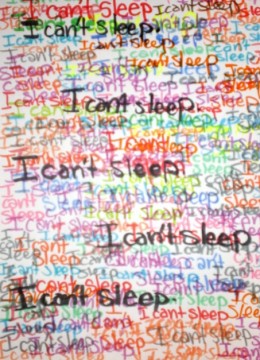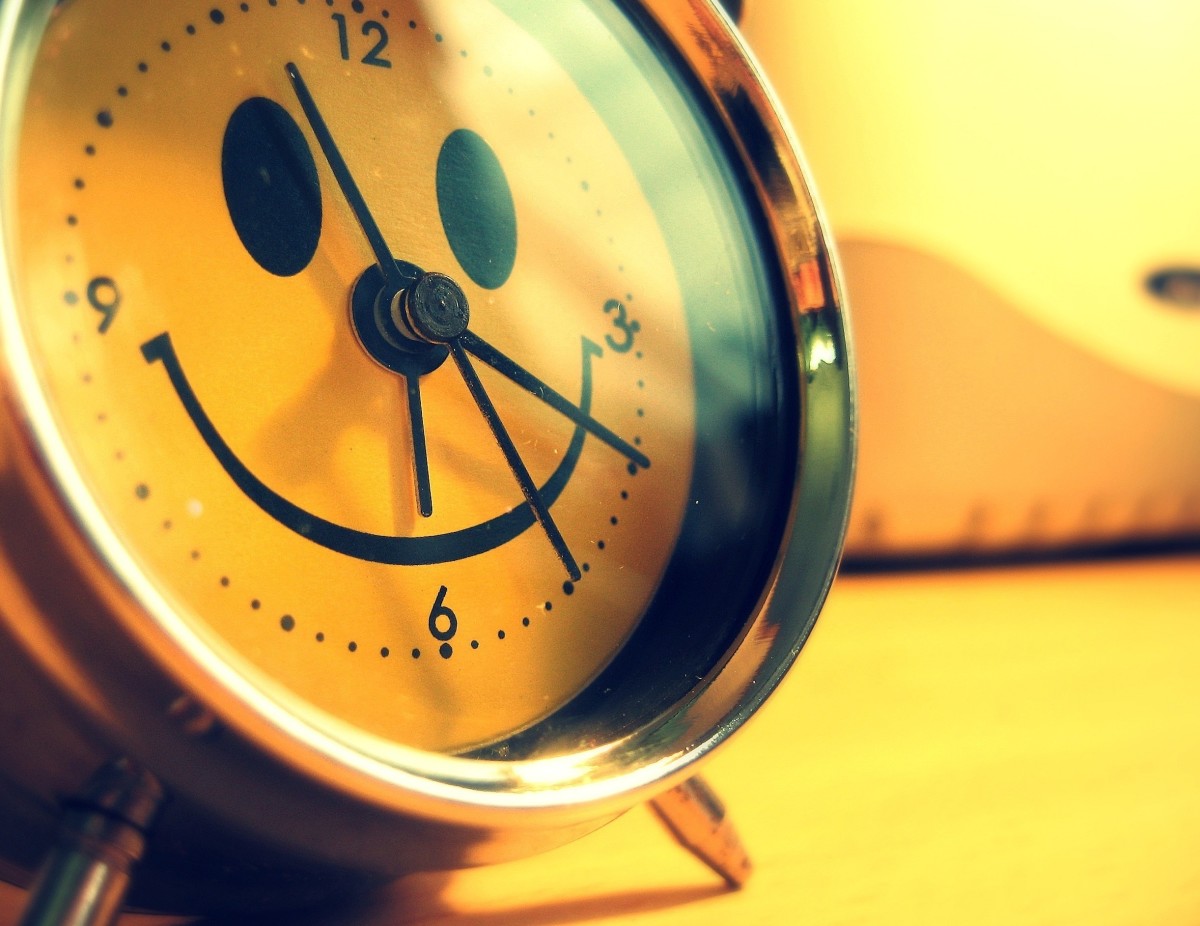I Can't Sleep and I Can't Stand It! Tips for Overcoming Sleep Problems

John's sleep diary - week 1
“I can’t sleep. It’s awful. I can’t stand it. I absolutely have to sleep. I can’t afford not to sleep. I’m tired, so why can’t I sleep? I should be asleep. I can’t take this anymore. This is bulls#!t! What’s wrong with me? If I don’t sleep, I won’t be able to function tomorrow. I have to be alert to do my job. If I don’t sleep, I’ll lose my job. I’ll have an accident on the job. I won’t be able to work. If I lose my job, what will happen to my family? I’m going to lose my job now. My family will live in poverty. I’ll get bags under my eyes. I’ll look like a zombie and a freak. No one will hire me. I’ll be irritable. I won’t be able to handle stress. I have to be calm, cool and collected – and I won’t be. If this keeps up, I won’t get that promotion. I have to get the promotion. I’ve worked too hard to screw it up now. It figures though. That’s just like me to screw up another good opportunity. I always screw things up. I can never go the whole yard. I’m pathetic. I’m a useless failure. I give up. It’s no use. I’ve tried everything. Nothing works. I can’t help it. What’s the point? No wonder I’m so depressed. F?#k it! It’s over now! I’m done. I’m losing my mind. I’ll get sick next; crazy and sick. I’m headed for the insane asylum, the psych ward, the loony bin. Soon I’ll start seeing things and hearing things. That’s what happens to people who don’t sleep. Sleep deprivation! Then I’ll get sick; pneumonia, cancer, stroke, heart attack. People who don’t sleep are more prone to illness. This really pisses me off! I should be sleeping! What’s wrong with me? There must be something wrong. The rest of the world is asleep. It’s a pretty simple thing to do; go to sleep. Yet, I can’t do it. What does that say about me? OMG! I’m a pathetic loser.”
This is John’s sleep diary from six weeks ago. Since then he has learned a lot about sleep behavior and about his thoughts about sleep. Last week, when he found himself awake for ten minutes, he calmly got up out of bed and went downstairs to journal. After thirty minutes of journaling and reading, he was tired again and went back to bed. He fell asleep for the night. He woke up after 7 hours of sleep feeling fully refreshed and restored. Here is his journal entry from that night:
John's sleep diary - week 6
“I’m writing in my journal because I am not sleeping. I learned not to lie in the bed for more than 20-30 minutes if I am awake. It’s ok that I am not asleep. It’s not the end of the world. It’s inconvenient, perhaps but hardly a big deal. I know how to handle this situation! When I’m tired again, I’ll go back to bed. It’s quite common for people to have times when they are not able to sleep. While I prefer to get 8 hours of sleep, I know it’s not absolutely necessary. I will do just fine. The world will not end because I am awake right now. I’ll use this time to catch up on some reading I haven’t had time to do. When I get tired, I’ll go back to bed. I caught myself starting to think I am a loser for not sleeping, but I know that not sleeping does not make me a loser!”
Notice how angry and upset John was six weeks ago, and how much more calmly and confidently he handles a sleep situation now. He has learned a lot about sleep in the last six weeks. In addition to learning some more accurate facts about sleep, some behavior techniques, and good sleep hygiene, he learned how his thoughts and beliefs about sleep can help or worsen his sleep. His thoughts six weeks ago led to his feeling angry, anxious, upset and depressed. Now his thoughts help him remain calm and increase his chances of getting back to sleep. He has regained a sense of control and reduced his emotional distress.
Perceptions about Sleep
Studies show that people with insomnia perceive that the time it takes to fall asleep is longer than it actually is, and report getting less sleep than they actually did. They overestimate the time it takes to fall asleep and underestimate the amount of sleep they are getting. John thought it took him at least two hours to fall asleep, and estimated that he was sleeping a total of 3.5 to 4 hours of disrupted sleep each night. It actually took him 45 minutes to fall asleep and he was sleeping 5 hours each night.
Concerns about Consequences
People with sleep problems often have concerns about the consequences of poor sleep. John’s concerns were that he would lose his job, miss out on a promotion, become mentally and physically ill, and not be able to provide for his family. These concerns about the consequences of poor sleep lead to anxiety which increases arousal and interferes with a person’s ability to relax and go to sleep. Learning to change concerns and beliefs about sleep prevents this arousal and promotes better sleep. By changing their thoughts about sleep, a sense of control is restored and emotional distress is reduced. John learned to compare his beliefs about what would happen with what actually happened the day after a restless night. He discovered that no one ever said anything to him the next day about his performance or not doing his job or behaving differently.
Cognitive Distortions and Myths about Sleep
John learned about “cognitive distortions” or faulty ways of thinking. He learned some general distortions that can lead to anxious, depressed, angry and upset feelings that can interfere with sleep. He also learned about specific beliefs about sleep, sleep myths, which interfere with sleep. He used a sleep journal to help him recognize these false beliefs and change his beliefs to more accurate and helpful beliefs that reduce arousal and promote better sleep.
Cognitive Distortions:
Black and white thinking: always (sleep or do poorly) and never (sleep or do well).
Absolute thinking: “I must sleep 8 hours.” “I have to get 8 hours of sleep.”
Unrealistic expectations - should statements: “I should never wake up at night” and “I should be asleep.”
Perception of consequences: “I cannot work/function without 8 hours of sleep.”
Catastrophic thinking: “I can’t stand it” and “It’s awful or horrible.”
Negative prediction: “I’m losing control of my sleep” “I’ll never get to sleep.”
Hopelessness: “There is little chance of getting better.”
Helplessness: “There is nothing I can do.” “I can’t…..”
Negative or derogatory self talk: “I’m worthless” and “I can’t do anything right.”
Myths and Facts:
Myth: If I go to bed earlier, I’ll have a better chance of getting more sleep.
Fact: Going to bed earlier decreases the chance of falling to sleep. The body has a natural sleep rhythm and a window of time that is optimal for sleep onset. Trying to fall asleep outside of this window creates frustration and anxiety, which worsens insomnia.
Myth: I need at least 8 hours of sleep to feel rested.
Fact: Most people do need 7.5 to 8 hours of sleep each night. There are individual differences with some people needing only 4 hours of sleep and others needing up to 10 hours. If a person only requires 5 hours of sleep but believes he needs 8 hours, he will try unsuccessfully to get 8 hours of sleep. The perception that he is “losing sleep” creates unnecessary stress.
Myth: I should stay in bed and try harder to fall asleep.
Fact: It is poor sleep hygiene to continue to lie in bed hour after hour looking at the clock. Good sleep hygiene involves getting out of bed after 20 minutes, engaging in a sleep promoting activity such as reading or meditation, and returning to bed when tired. Keep the alarm set, but cover it or put it under the bed. Looking at the clock doesn’t help promote sleep, but does increase anxiety about not sleeping.
Sleep Hygiene
John also learned about sleep hygiene and the importance of maintaining good sleep hygiene. Sleep hygiene refers to positive and negative behaviors and routines that can affect ability to sleep. Positive sleep hygiene includes behaviors and routines that promote good sleep. Negative sleep hygiene involves behaviors that interfere with the ability to sleep. Increasing positive sleep behaviors and eliminating negative ones can enhance other efforts aimed at improving sleep.
Positive Sleep Hygiene
- Create a relaxing routine before bedtime: diary writing, hot bath, meditation, muscle relaxation
- Limit activities in bed to sleep and sexual activity.
- Improve coping skills so sleep is not used as an escape or to avoid problems.
- Keep the bedroom dark, cool and quiet.
- Maintain a regular sleep and meal schedule.
- Exercise regularly: but not right before bedtime.
- Avoid naps.
- Reduce alcohol and caffeine in the evening.
- Learn and practice relaxation techniques.
- Maintain good health and seek treatment for health problems.
Negative Sleep Hygiene
- Use of alcohol to sleep.
- Watching scary movies before bedtime.
- Staying in bed for 12 hours.
- Irregular sleep schedule.
- Daytime napping.
- Drinking fluids before bedtime.
- Drinking caffeine before bedtime.
- Eating chocolate before bedtime.
- Overly rigid bedtimes.
- Exercise right before bedtime.
- Going to bed hungry or right after eating.
- Eating and watching TV in bed.
- Sleeping in to make up for lost sleep.
- Too much noise, heat and light.
- Too much physical or mental activity right before bedtime.
Behavioral Techniques for Improving Sleep
Finally, John learned some behavioral techniques that helped him establish a consistent sleep-wake cycle. He learned ways to relax more and reduce tension as well.
John used Stimulus Control techniques to help him associate the bed and bedroom with sleep and sleepiness, and to reduce the association with activities that interfere with sleep or are incompatible with sleep. These techniques helped him establish a consistent sleep-wake rhythm. He followed these strict instructions:
- Lie down to go to sleep only when sleepy
- Do not use the bed for anything except sleep
- Do not read, watch TV, eat or worry in bed.
- Sexual activity is the only exception to this rule
- If unable to go to sleep, get up and go into another room until ready to go to sleep.
- Repeat as many times as necessary.
- Set your alarm and get up at the same time every morning regardless of how many hours slept
- Do not nap during the day.
Like many people with sleep problems, John had begun to spend excessive amounts of time in bed to compensate for sleep loss, especially on the week end. He used Sleep Restriction techniques to limit the amount of time spent in bed to time actually spent sleeping. John was sleeping 5 hours a night, so he limited sleep to 5 hours a night at first. He set and maintained the same “sleep window” (sleep time to wake time) 7 days per week at first. He needed to wake at 5 a.m. so he slept from midnight to 5 a.m. every night. This was difficult at first because he felt tired and not fully alert during the day. He maintained this schedule for a week, then gradually added more sleep time to 7 hours each night. He continues to sleep from 10 p.m. to 5 a.m. each night. He finds that he is alert during the day and sleeps well at night.
John is learning more about relaxation techniques now. He has troubles with anxiety and mind-racing. He is often tense and has a hard time relaxing. He is learning about progressive muscle relaxation, deep breathing, guided imagery and meditation. He uses progressive muscle relaxation and has ordered some guided imagery CDs and a DVD on yoga breathing.
- Middle-of-Night Sleeping Pill Intermezzo Approved
The FDA has approved Intermezzo, a sleeping pill designed for people who wake up in the middle of the night and have trouble falling back to sleep.
Related Hubs
- Sleep Apnea Increases Risk of Stroke: by kimh039
Currently, more than 12 million American adults are believed to have sleep apnea. Most of these have undiagnosed and untreated sleep apnea. Increased diagnosis and treatment of sleep apnea could have a profound impact on the health and well being of - Snoring... Help! Get help Today. Don't Delay Get A Good Nights Sleep And Stay Alive: by melometer
snoring cures today - Sleep Disorders - Diseases, Disorders and Conditions - HubPages.com
Articles about Sleep Disorders on HubPages.










